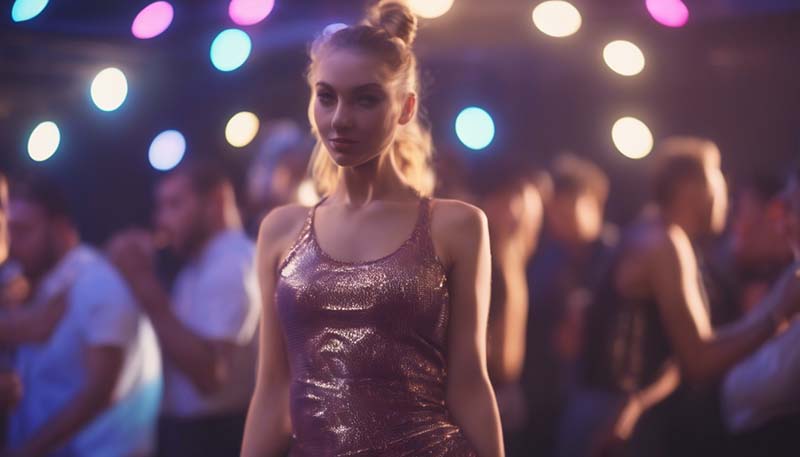Nightclubs have been a staple of urban culture for decades, providing a space for people to come together, socialize, and dance the night away. One genre of music that has played a significant role in shaping the nightclub experience is dance pop. In this article, we will explore the history of dance pop, its impact on nightclub culture, and the ways in which it continues to evolve.
**I. Introduction**
Dance pop is a genre of music that combines elements of pop music with electronic dance music (EDM), creating a catchy and upbeat sound that is perfect for dancing. It emerged in the 1970s and has since become a mainstay of nightclub playlists around the world.
**II. History of Dance Pop**
The origins of dance pop can be traced back to the disco era of the 1970s. Disco music was characterized by its upbeat tempo, syncopated rhythm, and use of electronic instruments such as the synthesizer. As disco faded in popularity in the late 1970s and early 1980s, a new genre of music emerged: dance pop.
Dance pop incorporated elements of disco, as well as other genres such as funk, R&B, and rock. Early dance pop artists included Madonna, Michael Jackson, and Prince, who all released hit songs that blended pop melodies with dance beats.
Advertisement
In the 1990s and 2000s, dance pop continued to evolve, with artists such as Britney Spears, Christina Aguilera, and Nelly Furtado incorporating elements of hip-hop and R&B into their music. The rise of electronic dance music (EDM) in the 2010s led to a resurgence of dance pop, with artists such as David Guetta, Calvin Harris, and Avicii producing chart-topping hits.
**III. Impact on Nightclub Culture**
Dance pop has had a significant impact on nightclub culture, shaping the way people dance, the music that is played, and the overall atmosphere of the club. Here are some of the ways in which dance pop has influenced nightclub culture:
1. **Dance Moves**: Dance pop has popularized certain dance moves, such as the Electric Slide, the Macarena, and the YMCA. These moves have become staples of the nightclub experience, with groups of people gathering on the dance floor to perform them together.
2. **Music Selection**: Dance pop has become a mainstay of nightclub playlists, providing a catchy and upbeat soundtrack for people to dance to. DJs often mix dance pop songs with other genres of music, such as hip-hop and EDM, to create a unique and energetic vibe.
3. **Atmosphere**: Dance pop has helped to create a fun and lively atmosphere in nightclubs. The upbeat tempo and catchy melodies of dance pop songs encourage people to let loose and enjoy themselves on the dance floor.
4. **Fashion**: The glamorous and flamboyant style of many dance pop artists has influenced the fashion choices of nightclub-goers. Bright colors, bold patterns, and form-fitting clothing are all common sights on the dance floor.
**IV. Evolution of Dance Pop**
While dance pop has remained a popular genre of music in nightclubs, it has also evolved over time. Here are some of the ways in which dance pop has changed in recent years:
1. **Electronic Influence**: As EDM has become more popular, dance pop has incorporated more electronic elements into its sound. This has led to the creation of sub-genres such as electropop and synth-pop, which feature heavy use of synthesizers and other electronic instruments.
2. **Collaborations**: Dance pop artists often collaborate with other musicians, both within and outside of the genre. This has led to the creation of unique and innovative sounds, as well as crossover hits that appeal to a wider audience.

3. **Social Media**: The rise of social media has allowed dance pop artists to connect with their fans in new and exciting ways. Many artists use platforms such as Instagram and TikTok to share behind-the-scenes glimpses of their lives, as well as to promote their music and upcoming performances.
**V. Conclusion**
Dance pop has played a significant role in shaping nightclub culture, providing a catchy and upbeat soundtrack for people to dance to. From its origins in the disco era to its current status as a mainstay of nightclub playlists, dance pop has evolved and adapted to changing musical trends and tastes. As nightclubs continue to be a popular destination for people looking to let loose and have a good time, dance pop will undoubtedly continue to play an important role in shaping the music and atmosphere of these venues.
**References**
* Reynolds, S. (1998). Energy Flash: A Journey Through Rave Music and Dance Culture. Soft Skull Press.
* Rietveld, H. C. (2015). This Is Our House: House Music, Cultural Expressions, and Racial Identities. Ashgate Publishing, Ltd.
* Stahl, M. (2015). \"Dance Pop.\" In The Bloomsbury Handbook of Popular Music Video Analysis, edited by Shirli Gilbert and Steven Tate, 91-104. Bloomsbury Academic.
Comments